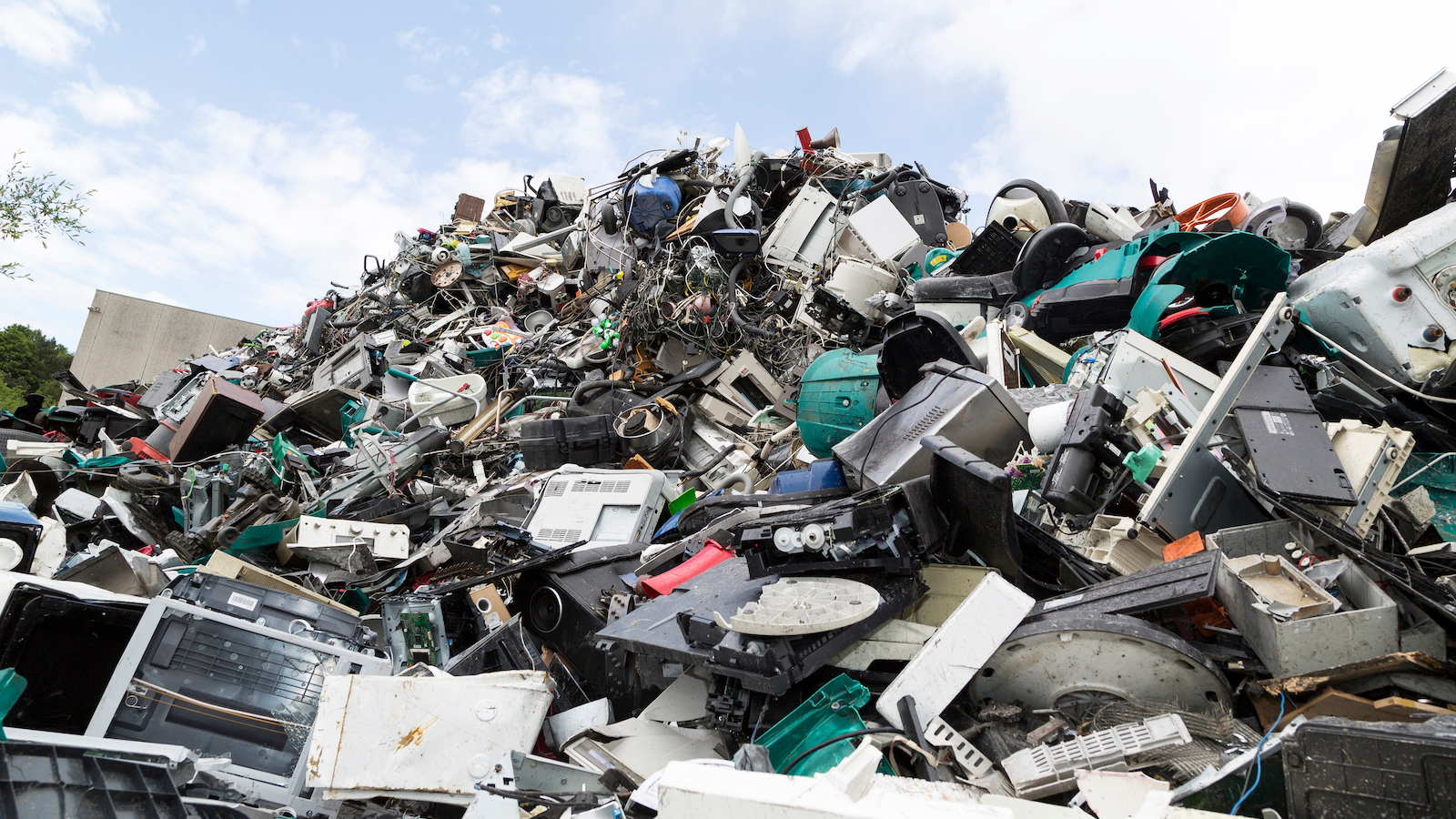Windows 10 is hardly the first piece of software to lose support. PIRG’s Electronic Waste Graveyard provides a long list of devices that stopped after the software “expired” or added surprise paywalls.
But there are a number of reasons why the end of Windows 10 deserves special attention.
1) An unprecedented amount of e-waste
Though estimates vary, up to 400 million computers are on the losing end as Microsoft stops automatic updates to security for Windows 10. This staggering amount can be traced to the popularity of Windows 10 and Microsoft’s decisions to impose strict hardware requirements in order to upgrade to Windows 11.
Windows 10 is used by 42.8% of all Windows computer users worldwide. By contrast, when support for Windows 8 ended in January 2016, only 3.7% of Windows users were still using it. Only 2.2% of Windows users were still using Windows 8.1 when support ended in January 2023.
Many of the computers still running Windows 10 can’t upgrade to Windows 11. In 2022, hardware researchers found that 43% of all computers running Windows 10 could not move to Windows 11 — which equaled around 400 million computers at that time.
Simply put, there has never been more computers cut off from support in one fell swoop. We estimate the End of 10 could result in 1.6 billion pounds of electronic waste. But waste isn’t the only impact. Each computer contains critical minerals that require large amounts of energy to mine, and those extractive industries leave lasting ecological damage in their wake.

2) A looming security disaster for millions of users
In case you weren’t aware, security updates are important. Any software is going to have some gaps in its security. When a bug or exploit in the software is discovered, software companies issue updates to prevent those vulnerabilities from being used by cyber criminals.
Even if cyber criminals discover some way of compromising a device, chances are that researchers will quickly patch those issues. When there are no more updates, those quickly-addressed exploits become open doors.
“Ransomware gangs and other malicious actors will be rubbing their hands in glee at the prospect of millions of unpatched – and unpatchable endpoints – after Oct. 14, including an estimated 180 million Windows 10 systems deployed on business networks,” Paul Roberts, President of Secure Resilient Future Foundation (SRFF), told U.S. PIRG. “Microsoft should reconsider its decision to end support for Windows 10 and prioritize public health and safety.”
The sheer volume of unpatched devices will make finding new vulnerabilities in Windows 10 a top priority for these malicious actors. Why hack 100 devices when you have a chance to exploit 100 million?
When asked by The New York Times’s Wirecutter why Microsoft isn’t making security updates automatic, the company responded, “A core principle of security is modernizing to the latest software versions.” So why not let people update older computers without hassle?
3) From free updates to forced upgrades
In 2015, Microsoft sold us a new vision of Windows: an operating system that was designed to be continuously updated with new features and security updates. Terry Myerson, Executive Vice President at Microsoft, wrote, “once a Windows device is upgraded to Windows 10 [we will] continue to keep it current for the supported lifetime of the device – at no cost.”
This was welcome news, and Windows 10 was celebrated by many advocates because of how well it worked on older machines. It was also popular with users. Within just five years after release, Windows 10 was already adopted by 75.6% of all Windows users globally.
However, their tune has changed. If you want to get security updates after Oct. 14, you have to pay or enroll in other Microsoft services. For the first year, businesses will have to pay $61 per device, which will double every year for a maximum of three years. Individuals can only enroll for one year by paying a $30 fee.
On the webpage that outlines the requirements for Windows 11, Microsoft has another suggestion: “consider purchasing a new PC.”
Microsoft must extend free support
In order to prevent a massive surge in insecure and junked computers, Microsoft must extend free support for Windows 10. This would allow hundreds of millions of users worldwide to keep using their devices safely. In doing so, they would also contribute to a sustainable future on our planet. We have found that if our laptops and desktops lasted just one year longer, the amount of pollution eliminated would be equivalent to taking more than 250,000 typical cars off the road for a year.
Unless Microsoft changes course, users will face the choice between exposing themselves to cyberattacks or discarding their old computers and buying new ones. If the hundreds of millions of users being impacted were to follow Microsoft’s suggestion and replace their computers, it could have disastrous environmental consequences.
The solution is clear: Microsoft must extend free, automatic support.
Agree? Add your name to our petition. If you are a business, organization or elected official, we are gathering signatures on this open letter.
Authors
Ali works on the Right to Repair campaign, advocating for consumers' right to repair the devices they own. Ali loves hiking.
Nathan leads U.S. PIRG’s Right to Repair campaign, working to pass legislation that will prevent companies from blocking consumers’ ability to fix their own electronics. Nathan lives in Arlington, Massachusetts, with his wife and two children.
.png)



